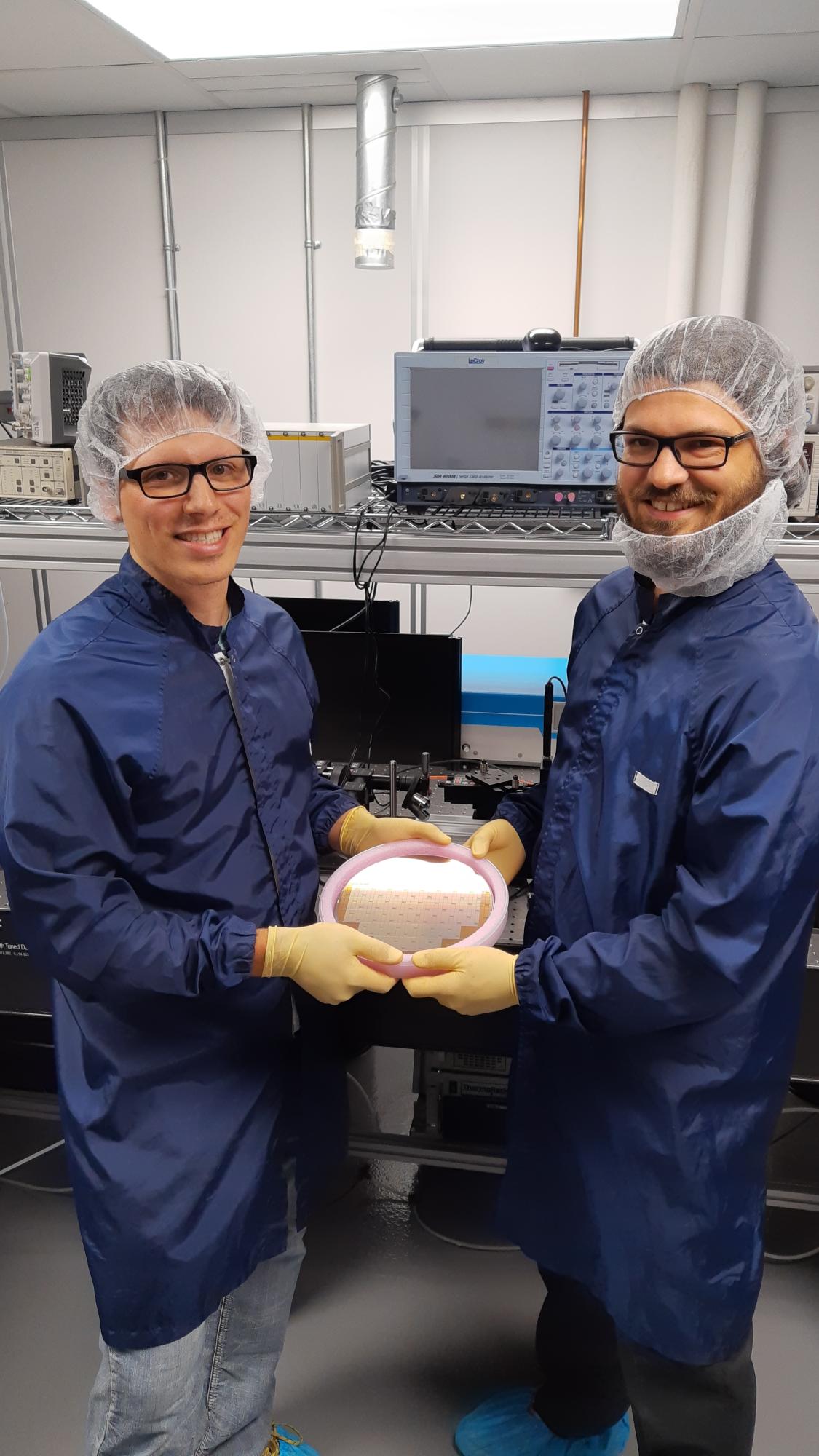What is dark matter?
The short answer is: we don’t know. So far, no one has ever seen dark matter directly, but we have observed dark matter’s gravitational effects on distant galaxies. For galaxies to behave as they do, there must be significantly more mass that is responsible for these effects than we can observe. So if we can’t see it, how do we know dark matter exists?
Enter UdeS and 3IT
Scientists at UdeS and the Interdisciplinary Institute for Technological Innovation (3IT – also located in Sherbrooke) may help provide a solution. They are developing a Single-Photon Avalanche Diode (SPAD) array, a class of photodetector that can detect low-intensity signals down to single light particles, called photons. By digitally counting individual photon particles, SPAD sensors can achieve exceptional low-light performance, even in conditions approaching near total darkness.
‘CMC provided us with tools that would otherwise be out of reach’
The SPAD array detector is then integrated in 3D over CMOS (complementary metal-oxide semiconductor, a continually evolving technology) electronics. Both the SPAD array and CMOS electronics take advantage of the fact that light is made up of particles. The CMOS controls, reads out, and processes data from the SPAD sensor. Nicolas Roy, a researcher at 3IT, stresses that this enables experiments to indirectly detect dark matter particles via the SPAD. Then, the CMOS layer underneath can analyse these alerts and convert them into useful data.
CMC provided the Sherbrooke team with technical support, and subsidized, cost-effective access for the sensor fabrication run. It has also provided them with access to valuable design tools and software licenses, and the process design kit (PDK) from device manufacturers to help the team undertake simulations and design. “CMC provided us with tools that would otherwise be out of reach,” said Roy.
The resulting SPAD/CMOS system can also be reconfigured to answer different questions and help detect different particles, giving it a wide range of potential uses.
An International Effort
One key project will be in experiments two kilometres below the earth’s surface in SNOLAB, the world’s deepest clean laboratory, built in the Creighton mine near Sudbury, Ontario. Here, hundreds of square metres of Sherbrooke sensors will participate in an international study to detect dark matter. The sensor has been shortlisted to join this ‘ARGO’ experiment involving it being submerged in a dark subterranean room, filled with 300 tonnes of liquid argon chilled to -186.15C. Shielded by rock from cosmic rays from the sun that might corrupt the experiment, the goal is detecting light created by the movement of Weakly Interacting Massive Particles, given the acronym WIMPs (perhaps with irony), by physicists who believe they could comprise dark matter.
The Sherbrooke sensors come in two varieties – large detectors for use in large experiments such as the dark matter and neutrino studies, but also smaller arrays, for more practical uses, with potentially important commercial spin offs, such as medical imaging and quantum key distribution, where they encrypt electronic messages so that they cannot be read by quantum computers.
Tommy Rossignol, another Sherbrooke researcher said that the adaptability and sensitivity of the SPAD/CMOS systems has sparked “a lot of interest in these applications….” And the potential industrial applications are vast: “At this point we’re just limited by our creativity or our imagination,” he said.
What next?
Understanding dark matter can unlock fundamental mysteries of the universe itself which have puzzled humanity since the beginning of time. Closer to home, many physicists are hopeful that dark matter may turn out to be just like radio waves, infrared light, X-rays and gamma rays – impossible to see, but used every day for new innovations once understood and harnessed.
Photo courtesy of Université de Sherbrooke
December 2023

